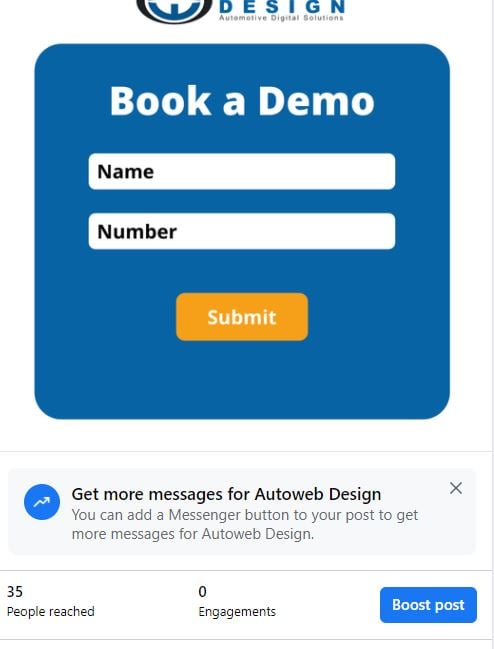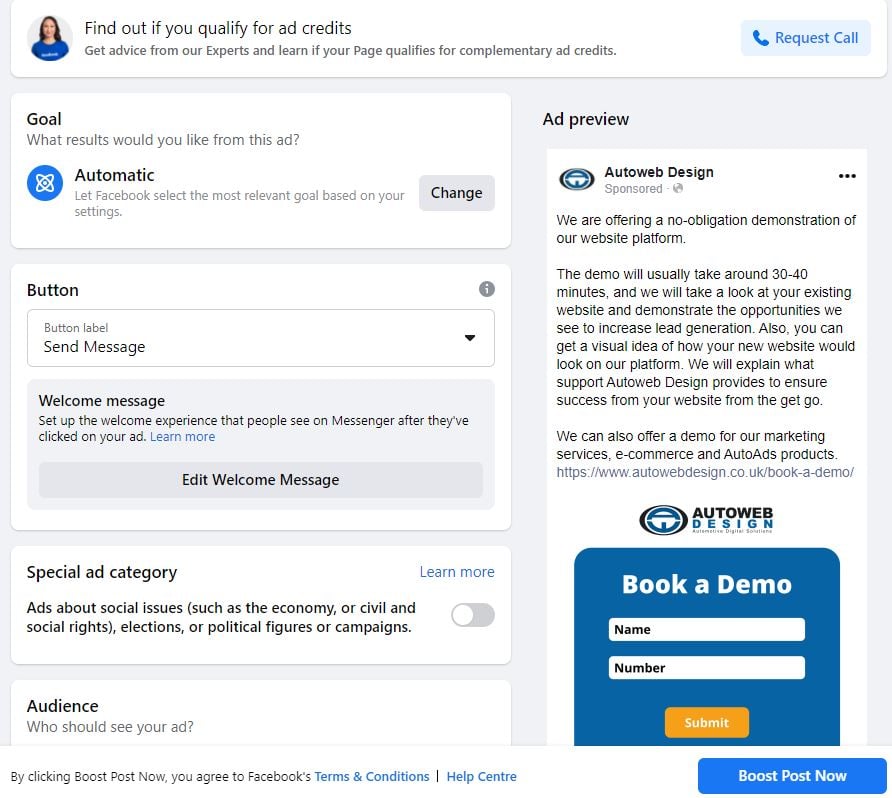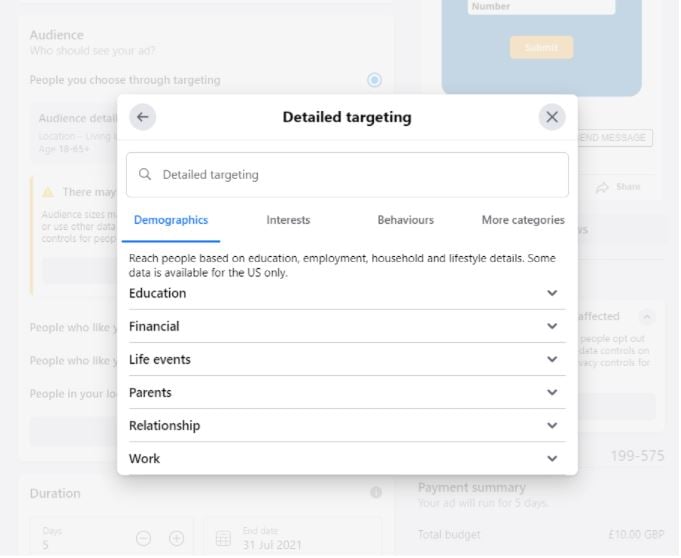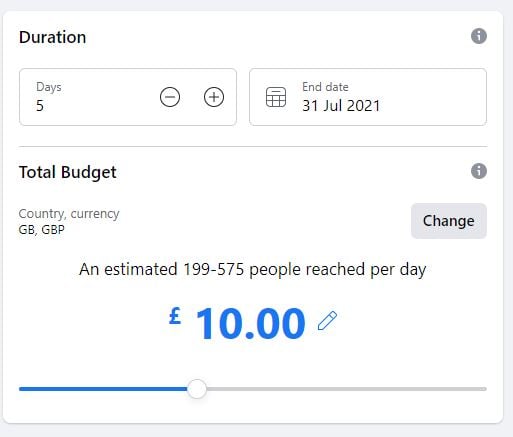Are you using Facebook to build your brand?
Are you using Facebook to build your brand?
Author: Natalie Banks - Digital Marketing Specialist
Facebook can be a bit of a minefield, especially if you don’t really dabble in social media, but it can be great for building an audience and keeping in touch with your existing customers. You don’t need to get too far into the nitty gritty to start seeing some results from a well executed social media strategy.
It seems car dealers are using this method as a means of throwing their used stock out to the masses with no associated costs. Facebook are a business just like everyone else, so it seems they simply want you to spend money on paid advertising instead.
What we will cover in this article:
- Facebook NAP consistency
- Telephone
- Address
- Name
- How to write posts for Facebook
- Length
- Imagery
- Hashtags
- How often should you post
With approximately 42 million users in the UK alone, Facebook is one of the most used platforms in the world, so it really does make sense to reach people on a platform they use almost daily.
Facebook’s largest demographic is 25 - 34 year olds, followed shortly by 18 - 24 year olds and then 35 - 44 year olds. Other age groups make up the remaining demographics, but this information allows us to know how best to target our messaging - do we go more jovial and fun or do we stick with more formal messaging.
When trying to build a brand and an audience, it’s important to be consistent, which also applies to your tone of voice. Switching your tone of voice won’t do you any favours as people will expect your posts to be consistent.
The same can be said for consistency when it comes to NAP (name, address and telephone), although this has an entirely different benefit. NAP should be consistent across all entries on the internet, whether it’s your Google my Business listing or your online directory submissions. By being consistent, you give Google the very best chance of linking up your profiles.
Facebook NAP Consistency
Adding your contact details to Facebook is quick and easy, but it’s important to take the time to ensure the information is correct and, most importantly, consistent.
To add your business information, simply navigate to your Facebook business profile:
- On the top menu, find About
- On the left hand panel, click Contact and Basic Info

Here, you will see that you have multiple sections to add your information to.
Contact Info:
- Telephone - this should be written in the same format as it is on your website.
- Email - again, you should aim to use the same generic email address that appears on your website, although this isn’t as important.
- Address - Ensure your address matches your website exactly and that any other citations (business directories) you submit.
Name - when you first set up your business Facebook profile, you should name your business in the same way as it appears on your website and Google my Business listing (take notice whether you use Ltd etc).
NAP consistency is key for improving your visibility on Google - essentially, the more times you appear across the internet, the better chance you have to rank as you will be increasing your credibility.
Submitting your website to multiple business directories might sound like a time consuming task, and you’d be right, which is why we’ve incorporated it into our SEO packages. We will handle all of the submissions, ensuring the NAP is consistent for the very best chance of ranking on Google.
How to write Facebook posts
When it comes to writing posts for your followers, the aim should be to write engaging content that serves a purpose to both your business and your followers.
Writing too many promotional posts won’t appease your followers and similarly, writing posts that benefit your followers but don’t help drive traffic to your website or enquiries to your dealership, might be considered a bit of a waste of time. It’s all about finding a fine balance between the two.
Top Tips
Length - Posts should be relatively short. No-one is going to want to read an essay or a long back story as they scroll through their Facebook feed.
Imagery - Use relevant imagery that is likely to capture the attention of your audience. Stock imagery won’t be as appealing as your own photos.
Hashtags - You might see hashtags being used in posts here and there, but they do actually serve a purpose, albeit, not enough of a purpose to use them haphazardly. Hashtags become clickable links that allow users to view all posts that have used that hashtag, so if for example an event is happening, users will use the hashtag and all posts will be collated under that hashtag.
Link - On your posts, you can add a URL that should always link out to your website, allowing you to drive traffic from Facebook to your digital storefront.
Types of posts
We briefly touched on how posts should benefit the user in order for them to engage with you. As a car dealer, you can post about:
- New stock - If you have recently added more stock to your inventory, you could create a post which shows users what is new in and ask them to book a test drive.
- Product launch - if you are a franchise dealer, you will most certainly want to advertise a brand new product to the range. We recommend taking your own photos, some of the exterior and some of the interior. Make your audience want to book a test drive.
- Events - If you are holding an event that your audience are likely to be interested in attending, you should aim to do a few posts around this leading up to the date of the event to get excitement building.
- Charity events - If your business is raising money for charity, you can start your fundraising using your current social media following. This also shows more of a personal touch to your business, rather than being a faceless company.
- Handovers - You will likely be doing handovers on a regular basis, so you could incorporate these into your social media strategy. A handover photo and a thank-you message usually works well.
Offers - If you are running a seasonal offer such as free Winter check or discounted MOT, you can engage your existing audience. If you want to run a dedicated social media offer, consider using a discount code that you only advertise on Facebook.
Types of posts
It’s important to know that Facebook works by showing your posts to your audience as well as your audience’s connections when they either share or like one of your posts. If your audience isn't interacting with your posts, you might want to consider boosting a post to reach brand new audiences on Facebook.
This method would work well if you have a limited time offer on where you can capture brand new customer details for your mailing list.
Boosting a Facebook post is slightly different to Facebook advertising whereby you have a dedicated monthly budget and will likely be running re-marketing campaigns.
When you boost one of your posts, you specify a budget and once that budget is reached, the post will stop showing to new audiences, and only your followers will continue to see it.
Once your post is live, you will have the option to boost your post. Take one of our recent posts here:

This post didn’t get any engagement from our following, so if we wanted to reach brand new audiences, we could simply press Boost Post at the bottom.
Once we click this, we will have the option to amend the call to action and specify an audience using demographics.

Once you have created a button for your call to action (you can preview your ad on the right hand side), you can specify your audience below:

Select the demographics you want to target or click Detailed Targeting to specify an interest or behaviour.
Below here, you will be able to set a budget and how long you want the ad to run for.

Consistency of Posts
Having a Facebook strategy will only work well for you if you post regularly in order to build your audience. Once you have started to build your audience, they will expect to see regular updates from you.
You don’t have to post daily, unless of course there is something to shout about, but two to four times a week should be the sweet spot.



